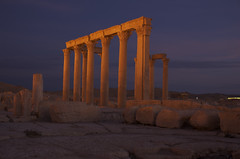Last night after work, after a day spent in front of the computer, fixing crucial details in an important document and sending dozens of emails in rapid succession, always to the same three people, I dove into the London Underground system for a ride on the tube then another on the tube and then, at Canning Town, one on the DLR.
The DLR is not part of the Underground system, though it is integrated with it. The acronym stands for a number of competing three-letter monikers that all mean the same thing. I use Dockland Light Rail, and I always get a kick out of riding it, not the least because it features in the clearest memories I have of my first trip to London, back in 1993 when our high school tutor group went there by coach and ferry. This was before the advent of budget airlines.
Reading up on London before going, I became fascinated with the Docklands, back then a nascent office development with an attitude. While only a few skyscrapers had been completed, the scope of the project was stunning. The idea was to transform docks and wharves that had fallen into disuse and decrepitude into shining beacons of successful capitalism. One fabulously long-lived but recently failed moneymaking machine, the Port of London, was supposed to be replaced with another, an extension of the City that had prospered since the 80s.
Back then, the few towers stood like searchlights. The development was confined to the area around Canary Wharf. I took the DLR from Bank and was immediately catapulted into the future of ambitious science fiction movies. The train skirred silently into motion. There was no driver; the thing seemed to move on its own volition. After a minuted in the dark, we had tunneled out of Bank and glided (so disappointed that the past of glide is not glid) along elevated tracks, towards an artificial landscape of vertical glass and steel. Sitting in the first car, I could see the synthetic panorama in all its glory.
The illusion of timelessness persisted once I got off and explored. There was no one there, no people on the sidewalks, no cars in the streets. The docks were silent; there was no activity. The whole area looked like one big movie set, illusory, unreal. There was no dust or dirt anywhere. I kept looking for the shrink wrap on the buildings.
Almost twenty years later, the Docklands have grown beyond anyone’s dreams. There are headquarters of financial institutions and square miles of office buildings, but also thousands of apartments. People live and work there, but it still looks and feels like a project, clinical, lifeless. Signs of the past abound and are often craftily incorporated into new structure, but there is no sense of historic continuity. Roaming the area on a sunny day is pleasant enough, but I couldn’t see myself living there.
Last night, I stayed on the DLR for two stops only. I got of at the ExCel, a huge conference center right at the end of the City Airport runway. While propeller planes were taking to the skies noisily, I followed the crowds into the ExCel, which feels a bit like an airport itself. A few minutes down the main avenue, there was a big entrance to the left, decked out in red, screaming Virgin London Marathon 2011. I had come to pick up my number and chip.

No comments:
Post a Comment